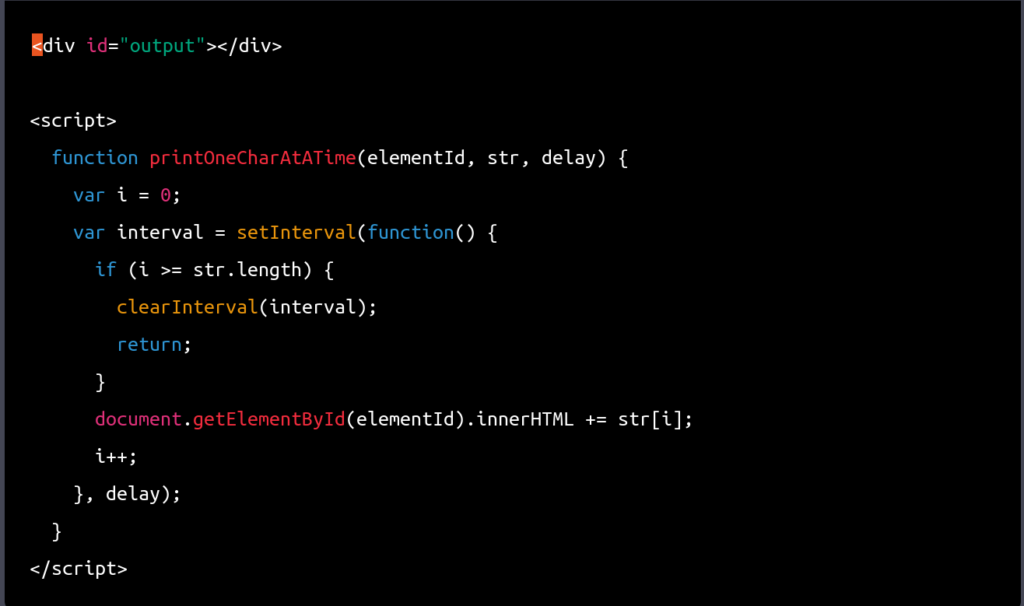The process of displaying one character at a time creates the feeling that the system doing the work is alive, like how a human being is typing it. This a nice feature that makes ChatGPT feels very intuitive and alive or sentient.
Let us see how to implement this kind of feature in Python and in HTML Javascript.
To print one character at a time you can use the print function and specify the character as a string with a length of 1. For example:
for c in "Hello, World!":
print(c, end="")
time.sleep(0.5) # delay for 0.5 seconds
This will print each character in the string “Hello, World!” with a delay of 0.5 seconds between each character.
Note that the end parameter of the print function specifies what should be printed at the end of the line, and the default value is a newline character. Setting end to an empty string will prevent the newline character from being printed, allowing you to print each character on the same line.
You can also use the flush parameter of the print function to ensure that the character is immediately printed to the output, rather than being buffered. For example:
for c in "Hello, World!":
print(c, end="", flush=True)
time.sleep(0.5) # delay for 0.5 seconds
This will ensure that each character is immediately printed to the output, rather than being buffered until a newline character is encountered or the buffer is full.
We can convert this into a function and use it multiple times via the print or sys.stdout streaming
import time
def character_print(text):
for c in str(text):
print(c,end="", flush=True)
time.sleep(0.5) # delay for 0.5 seconds
Alternatively you can also try the streaming version
import time
import sys
def character_print(s):
for c in s:
sys.stdout.write(c)
sys.stdout.flush()
time.sleep(0.25)
In HTML, you can use JavaScript to dynamically update the contents of an element on the page. For example, you can use the innerHTML property of an element to set its contents, and the setInterval function to update the contents at a specified interval.
Here is an example of how you could print one character at a time in an HTML element using JavaScript:
<div id="output"></div>
<script>
var str = "Hello, World!";
var i = 0;
var interval = setInterval(function() {
if (i >= str.length) {
clearInterval(interval);
return;
}
document.getElementById("output").innerHTML += str[i];
i++;
}, 500);
</script>
This will print each character in the string “Hello, World!” with a delay of 0.5 seconds between each character, by updating the innerHTML property of the output element every 0.5 seconds.
In JavaScript, you can use the setInterval function to call a function at a specified interval, and the innerHTML property to update the contents of an element.
Let us convert this to a function

<div id="output"></div>
<script>
function printOneCharAtATime(elementId, str, delay) {
var i = 0;
var interval = setInterval(function() {
if (i >= str.length) {
clearInterval(interval);
return;
}
document.getElementById(elementId).innerHTML += str[i];
i++;
}, delay);
}
</script>
You can then use this function to print one character at a time by calling it and passing the element ID, string, and delay as arguments. For example:
<script>
printOneCharAtATime("output", "Hello, World!", 500);
</script>
In the next tutorial we will explore how to convert this into a package.
Thanks for your time
Jesus Saves
By Jesse E.Agbe(JCharis)